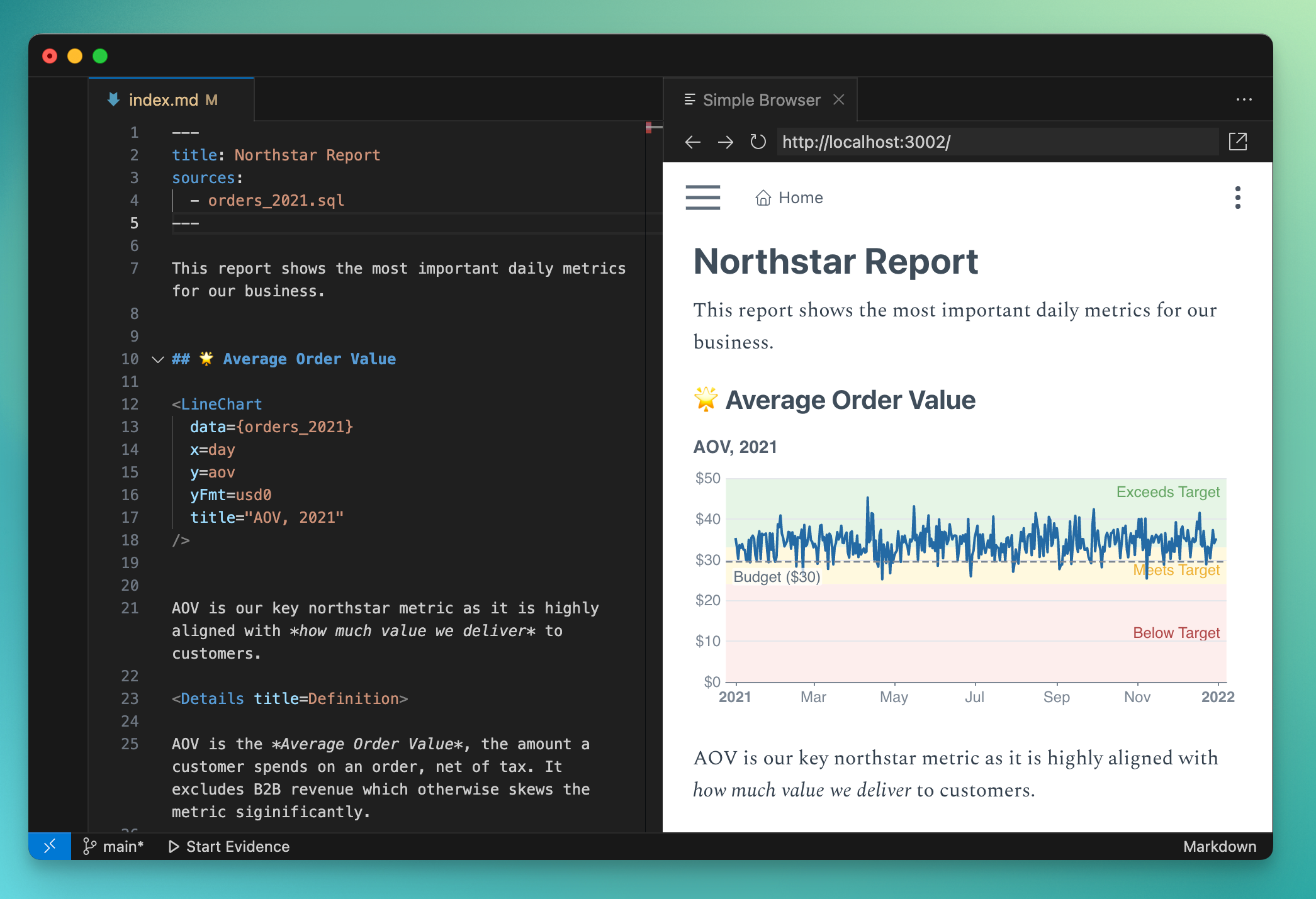From Tableau and Looker, to PowerBI and beyond, there is no shortage of business intelligence (BI) tools designed to help companies unlock insights from their vast swathes of data. But a newcomer has arrived on the scene with some fresh BI smarts in tow, aimed at more “technically-inclined” data teams.
Founded out of Toronto, Canada, in 2021, Evidence emerged from Y Combinator’s (YC) summer ’21 cohort of startups with the promise of a modern alternative to popular BI incumbents. Indeed, while many BI tools share key characteristics, they often vary in terms of who they’re targeting: some offer more code-based workflows for data ingestion such as Google’s Looker, others offer a drag-and-drop based interface which are aimed at less technical data analysts, and others offer a mix of both.
On top of that, BI software comes in a variety of proprietary and open source flavors, factors that can influence which tools a company want to deploy.
Evidence, for its part, approaches things very much from a code-based standpoint, enabling teams to build data products using SQL and markdown. Moreover, it’s entirely open source, to boot.
Looking to expand its commercial footprint, Evidence today announced it has raised a tranche of seed funding and is opening up its premium cloud product for businesses that lack the resources to deploy and self-host Evidence.
Dropping the drag-and-drop
Drag-and-drop BI workflows have their place, insofar as they allow data teams to more easily manage and manipulate their data. But this can lack the sophistication and granularity afforded by more manual approaches.
“This drag-and-drop report building process is fine for a lot of data teams, but it is very painful for more technically-inclined data teams,” Evidence co-founder and COO Sean Hughes told TechCrunch. “It results in data products that are extremely difficult for end-users to use, and for data teams to maintain.”
Within Evidence, each step — from data-sourcing to defining reports — is carried out using code. According to Hughes, this is preferential to a lot of modern data teams that prefer to operate more like software engineers. For example, this supports version control and governance — users can manage their entire workflow and team collaboration using Git, and they can create a complete and accurate history of the project. This also means that they can revisit older versions of a product, and cut/copy/paste and repurpose old code.
“Most BI tools are littered with old, broken, and irrelevant reports because it’s extremely time-consuming to build something, then move pieces of it elsewhere,” Hughes explained. “As a result, you don’t want to throw things away. That’s not the case with Evidence.”
Moreover, a code-based approach also supports teams with their broader continuous integration and deployment (CI/CD) endeavors.
“You can work on a development version of your project while making changes, run tests on those changes and release the updates to production with a pull request,” Hughes explained.

Evidence-flavored markdown in user’s ID, with live preview on right. Image Credits: Evidence
In some ways, Evidence might seem like a counter or “pushback” against the broader no-code/low-code movement, but Hughes reckons his company serves more as an “extension” to a separate movement that has been gathering steam in the analytics space.
“Data teams increasingly want to work like software engineers and have begun adopting code-driven — and open source — products in their data stack,” Hughes said.
One analogy that Hughes used to underscore this point is that of Squarespace, the billion-dollar behemoth that helps just about anyone build their own website. Sure, it serves a purpose for millions of people, but it’s not for every scenario.
“No-code/low-code reporting tools work well for a lot of people, but they are much too limited for more technical data teams,” Hughes said. “It would be like giving Squarespace to a front-end web development team. Squarespace works great for a segment of users who need to set up a simple website, but a professional developer will want and need to do much more. We’re focused on building something amazing for the technically-inclined data teams who need to go beyond what’s possible in a no-code/low-code tool.”
Open source is also a major selling point over industry heavyweights such as Looker or Tableau, with the likes of Lightdash, Metabase and Apache Superset (which has a VC-backed commercial entity too) vying for data teams’ affections. Most of these tools, according to Hughes, look much the same as Tableau or Looker, except they can be self-hosted. This is a huge benefit in its own right, of course, as companies can retain full control of their data, but it’s this open source approach combined with a code-based workflow that Evidence hopes will ingratiate itself to businesses the world over.
After an extended period in early-access mode, Evidence is also now extending access to its cloud service to a wider audience as part of a new invite-based program, backed by $2.1 million in seed funding from A Capital, Y Combinator, SV Angel and a host of angel investors.
“Everyone on our current waitlist will be given access to Evidence Cloud,” Hughes said. “We are moving from a waitlist to invite-only, where anyone with an invite will get access. Invites can be received from current Evidence Cloud customers, or directly from an Evidence team member.”
The cloud plan includes a free starter tier that includes up to five “viewer” (i.e. end-users) accounts, alongside a team plan costing $500 per month that includes up to 50 viewer accounts. Additional enterprise-grade requirements, such as single sign-on (SSO) and more viewer accounts, can also be supported as part of a customizable plan.
